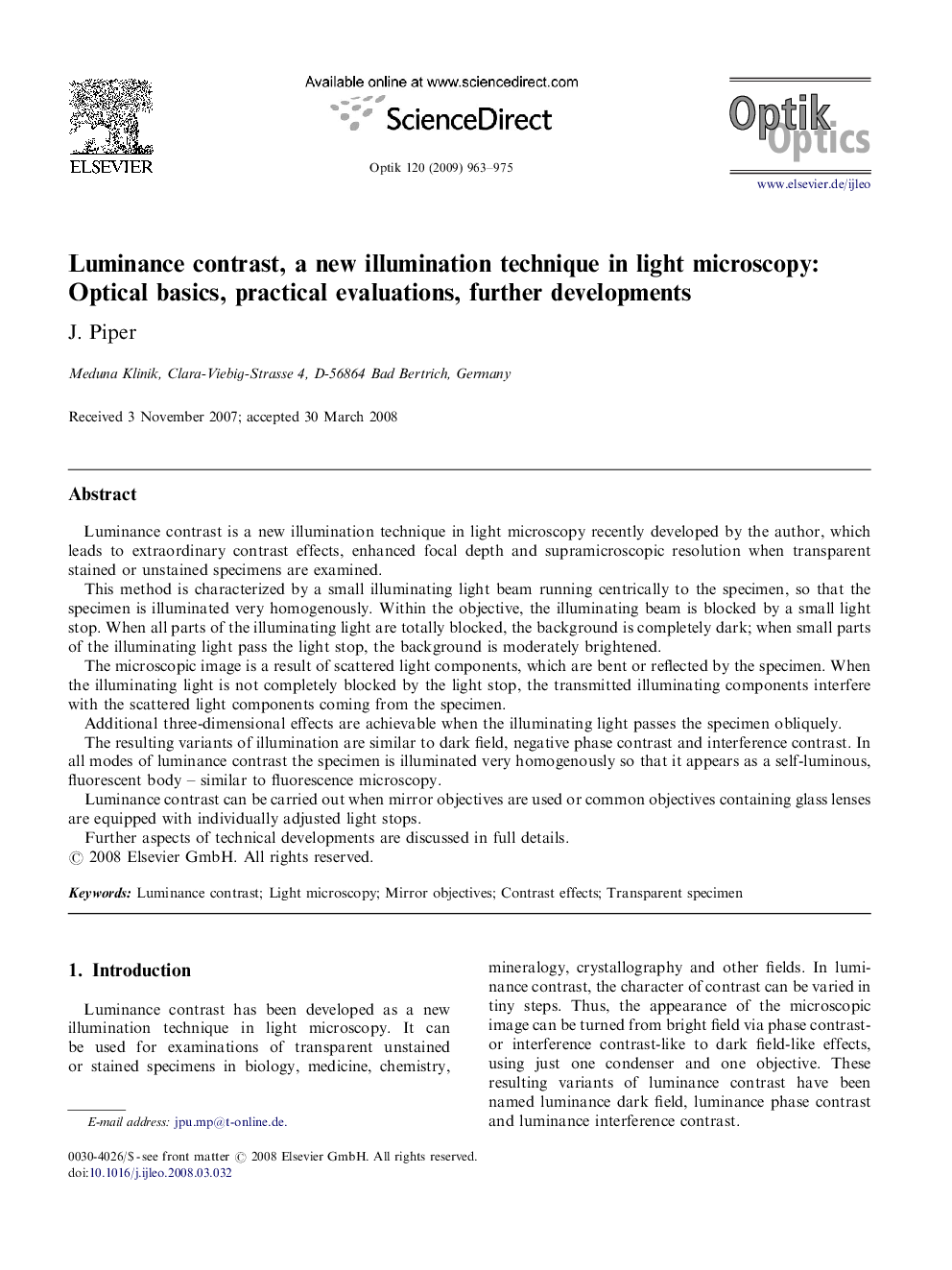| Article ID | Journal | Published Year | Pages | File Type |
|---|---|---|---|---|
| 852261 | Optik - International Journal for Light and Electron Optics | 2009 | 13 Pages |
Luminance contrast is a new illumination technique in light microscopy recently developed by the author, which leads to extraordinary contrast effects, enhanced focal depth and supramicroscopic resolution when transparent stained or unstained specimens are examined.This method is characterized by a small illuminating light beam running centrically to the specimen, so that the specimen is illuminated very homogenously. Within the objective, the illuminating beam is blocked by a small light stop. When all parts of the illuminating light are totally blocked, the background is completely dark; when small parts of the illuminating light pass the light stop, the background is moderately brightened.The microscopic image is a result of scattered light components, which are bent or reflected by the specimen. When the illuminating light is not completely blocked by the light stop, the transmitted illuminating components interfere with the scattered light components coming from the specimen.Additional three-dimensional effects are achievable when the illuminating light passes the specimen obliquely.The resulting variants of illumination are similar to dark field, negative phase contrast and interference contrast. In all modes of luminance contrast the specimen is illuminated very homogenously so that it appears as a self-luminous, fluorescent body – similar to fluorescence microscopy.Luminance contrast can be carried out when mirror objectives are used or common objectives containing glass lenses are equipped with individually adjusted light stops.Further aspects of technical developments are discussed in full details.
